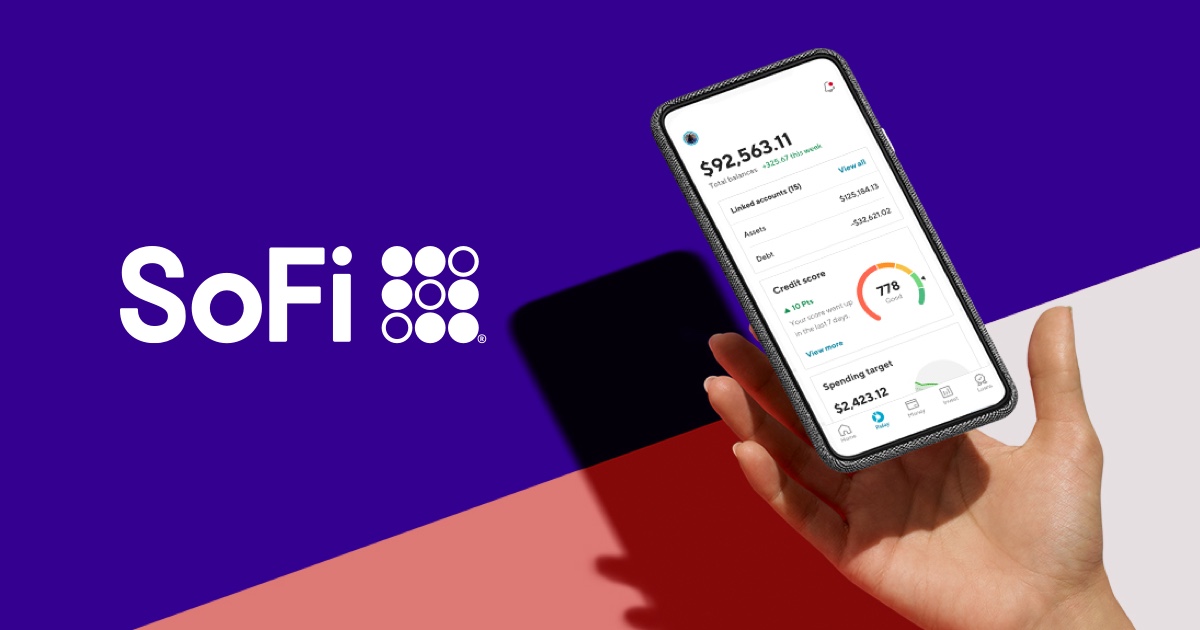SoFi, a fintech business, is the newest child on Wall Street, having gone public in early June through a SPAC merger with Social Capital Hedosophia Holdings Corp. V. Its prospectus look bright; let’s look at the company and its shares.
Sofi
SoFi was founded in 2011 to help millennials refinance their college debts. It also provides stock and cryptocurrency trading, personal and home loans, and wealth management services.
SPACs, or special purpose acquisition firms, raise money through a shell company to purchase an existing company and have grown in popularity last year.
In private markets, SoFi was recently valued at $5.7 billion. According to PitchBook, it has received money from investors such as Peter Thiel, Silver Lake, and SoftBank.
How SoFi works?
Through its app, SoFi (short for Social Finance) aims to be the first full one-stop-shop for all things digital banking. Consumers may “borrow, save, spend, invest, and protect” all in one location on the SoFi platform.
With half of the customers using several banks and 80% of those customers doing so due to poor service, it’s easy to see how this might be a profitable venture if done right. This ease can be beneficial: cross-selling improves SoFi’s unit economics significantly.
 SoFi’s Galileo platform provides application programming interfaces (APIs) for fundamental digital banking functions to fintech firms. Galileo began as a partner for SoFi’s consumer-facing products, but the technology proved successful that the company chose to purchase it completely. That’s a big statement. Galileo enables businesses to develop payment, card, and digital banking solutions, and this market is also thriving.
SoFi’s Galileo platform provides application programming interfaces (APIs) for fundamental digital banking functions to fintech firms. Galileo began as a partner for SoFi’s consumer-facing products, but the technology proved successful that the company chose to purchase it completely. That’s a big statement. Galileo enables businesses to develop payment, card, and digital banking solutions, and this market is also thriving.
SoFi used the cash proceeds from the transaction to fund growth, market expansion, and the development of new product offerings, as well as to accelerate the company’s plans to expand create the first digital one-stop-shop for members to borrow, save, spend, invest, and protect their money based on their location.
Revenues and Stocks
Several examples of low-quality firms have gone public through SPAC, but SoFi is not one of them. The firm is firing on all cylinders, and there is no sign of a downturn on the horizon.
The stock of SoFi Technologies (SOFI) has been decreasing for the past week. On June 2, it reached its all-time high of $24.37. The stock was worth $21.23 on June 24, but it plummeted to $19.31 the next day. Analysts believe it has now reached its lowest point and will continue to rise shortly.
Last quarter, revenues increased by 151 percent year over year to $216 million, above the 12.2 percent projection SoFi provided in its investor presentation. Despite not collecting $12 million in previously anticipated revenues from the purchase of Apex clearing, the company maintained its 2021 estimate.
Its EBITDA margin improved from -48 percent to 2% year over year, which is rather impressive. This 2% number also surpassed the upper end of the company’s earlier projection; SoFi is thriving and profitable.
Based on its most recent projection, the firm trades for 18.3 times 2021 revenue and 67 times 2021 contribution profit — not outrageous, given the company’s prior performance.
Sofi is bound to grow.
SoFi also confirmed its previous revenue forecast of $980 million in FY 2021, indicating a 58 percent year-over-year increase. Long-term, the firm hopes to earn $3.7 billion in revenue by 2025, and that’s without the approval of a bank charter, which the company just applied for.
SoFi’s range of services is very amazing, and it far outpaces the competition. There is no separate app that integrates all of these services. Because it offers a comprehensive range of financial goods, the SoFi platform may be considered a “super-app” for all things financial. The future looks bright for SoFi as of now.











